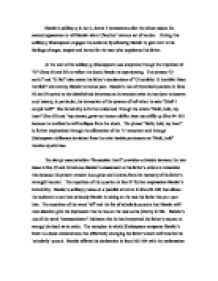


HAMLET 1996 FREE FULLįull immunization was highest in Manipur (75.2 %) and lowest in Nagaland (12.8 %).

The mean expenditure incurred on immunization varies from as low as Rs. Children belonging to the urban area and richer wealth quintile had higher odds of getting immunization. Moreover, expenditure on immunization was high among children from the urban area, rich wealth quintile and who got immunized in a private facility. There exists regional inequality in immunization coverage as well as in expenditure incurred on immunization. Based on the findings, we suggest looking for the supply through follow-up and demand through spreading awareness through mass media for immunization. Vaccinations are one of the most cost-effective and impactful health interventions used worldwide and have resulted in dramatic declines and regional elimination of many serious childhood infectious diseases. The World Health Organization (WHO) estimates that about 2–3 million deaths under 5 years of age could be preventable through immunization. Nonetheless, the WHO estimates that vaccine-preventable deaths (VPD’s) are still responsible for 1.5 million deaths each year. The recent estimates on immunization coverage by WHO and UNICEF report that globally 19.5 million infants missed the routine immunization services, and 60 % of these children reside in developing countries which include India, Pakistan, Indonesia, Angola, Brazil, the Democratic Republic of the Congo, Ethiopia, Iraq, Nigeria, and South Africa. India’s immunization program dates back to 1978, when the Expanded Program of Immunization (EPI) was launched by the government of India.


 0 kommentar(er)
0 kommentar(er)
